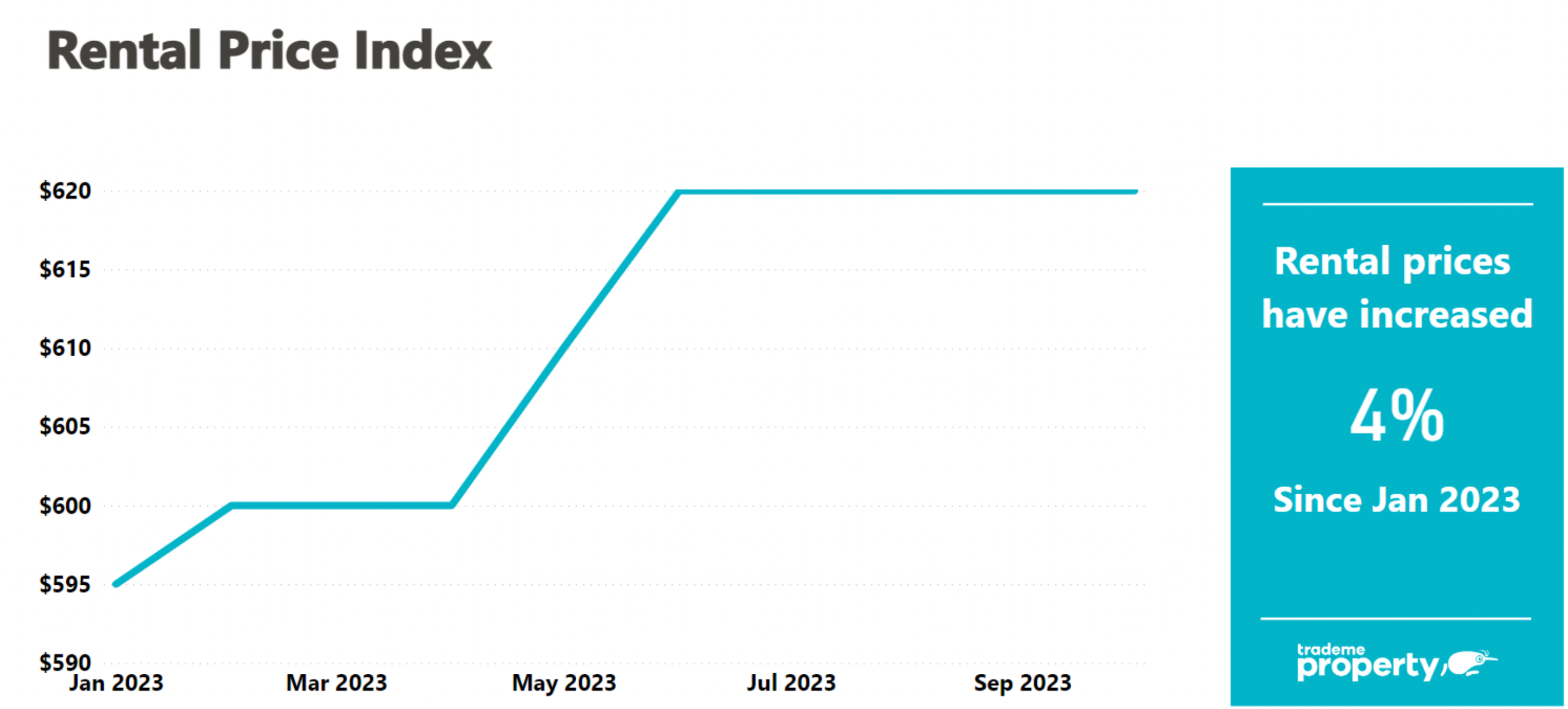News Next article
Rental Price Index October 2023
Rental market holds steady as new government forms
21 November 2023Rental prices have continued to stabilise as the new Government starts to take shape, according to Trade Me’s latest Rental Price Index.
The latest data shows that Aotearoa’s national median weekly rent has held steady at $620 for the month of October, despite the uncertainty surrounding the election - and what new policies could impact the rental market.
New Zealand’s national median weekly rent has remained stagnant at $620 per week since June, however, Trade Me’s Property Sales Director Gavin Lloyd says that could change.
“With National gearing up to lead the country for the next three years, there's potential for more investors to dip their toes back into the property market. If National moves forward with their plans to tweak interest deduction rules and the bright-line test, we might see a boost in investor confidence,” says Mr Lloyd.
“This shift could encourage property owners to offer more rentals, easing the supply pressure tenants are feeling and potentially seeing rent prices ease. However, it's worth noting that these changes aren’t going to kick in until April 2024, so we're not expecting an overnight transformation,” says Mr Lloyd.
Auckland rent reaches all time high
While the national median weekly rent has held steady, certain regions like Auckland, Manawatū, and Otago broke records in October. In Auckland, the median weekly rent rose by $5 when compared with September to $675. But when compared to the same time last year, rents have risen by $65.
Manawatū/Whanganui also hit a new high, with renters shelling out $20 more than the previous month, pushing the median weekly rent to $550. Palmerston North emerged as the priciest area within the region, reaching a new record of $580.
Down south, Otago set a new high for the third consecutive month. The median weekly rent for a rental property in Otago hit $590 in October.
“As students flock back to the main centres to secure their new places for 2024, and with the new government incoming, it looks like we're gearing up for a busy summer in the rental scene. This mix of students searching for homes and policy changes in the pipeline could really shake the rental market up heading into the New Year,” added Mr Lloyd.
Rents for all house sizes increase
Across the motu, the median weekly rent for houses of all sizes reached a record high.
Smaller homes with 1-2 bedrooms were up 7.1 per cent on the same time last year to $530, 3-4 bedrooms reached $695 - an increase of 6.9 per cent - and larger (5+ bedroom) homes jumped to $1,080, which is an increase of 13.7 per cent.
Mr Lloyd said this was largely driven by increases in the Auckland rental market which is the largest in the country, and saw double-digit annual percentage increases for almost every house size.
Supply still behind demand
Renters are still having a tough time finding properties, given that national rental supply dropped by 10 per cent in October while demand rose 6 per cent year-on-year.
Demand dwindled in most regions when compared with the same time last year. Nelson/Tasman had the biggest annual surge in demand of 33 per cent followed by Auckland on 21 per cent and Southland on 5 per cent.
Nelson/Tasman’s remarkable surge in demand could be a result of renters wanting a sea-change for the summer months. However in contrast, Taranaki experienced a significant demand dip of 27 per cent year-on-year.
Mr Lloyd says there has been an uptick in listings in some smaller regions.
“There are quite a few regional areas that saw a rise in rental listings in October, making them fantastic options for Kiwi to spend their summer months, especially if tenants have the flexibility to move around. Places like Manawatū, Northland, Taranaki, and Southland are looking pretty promising,” concludes Mr Lloyd.
Other news you might like






